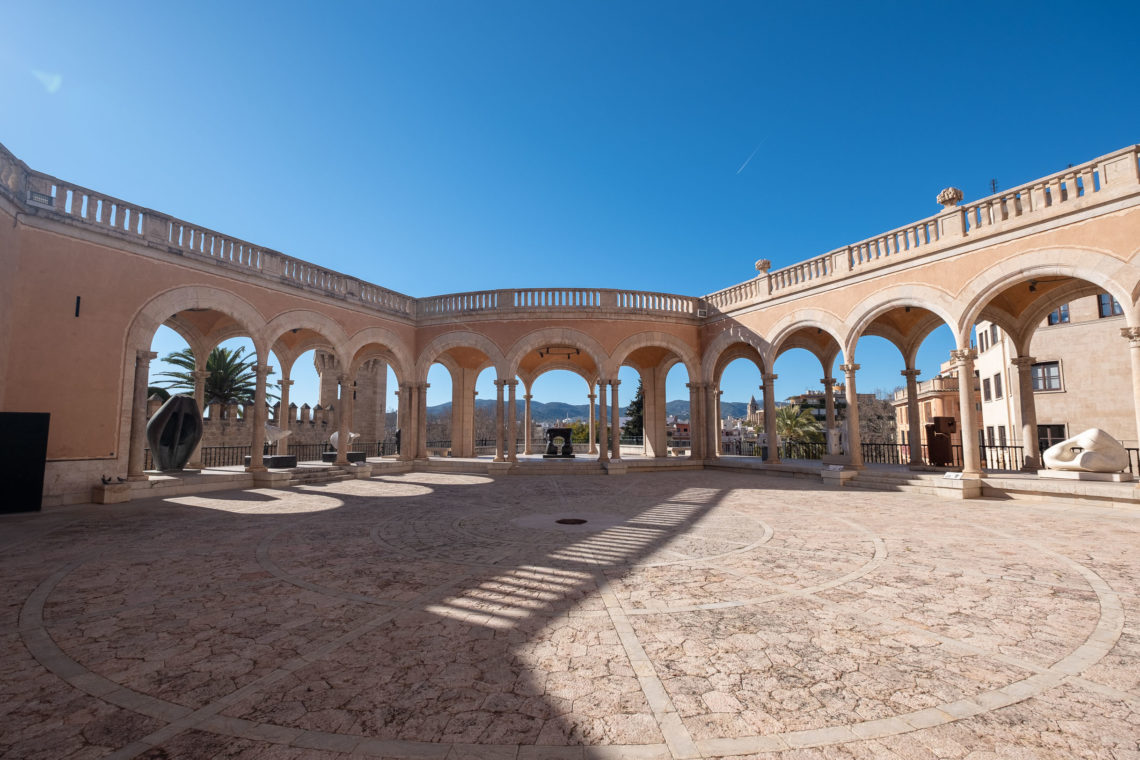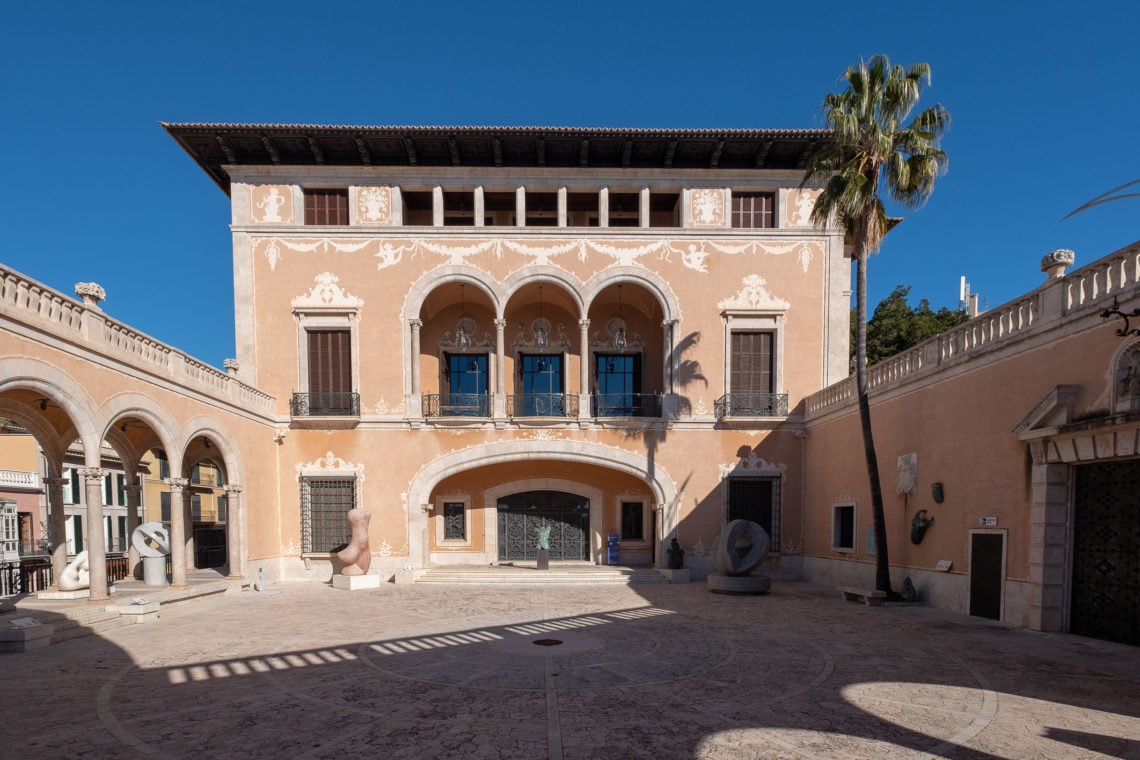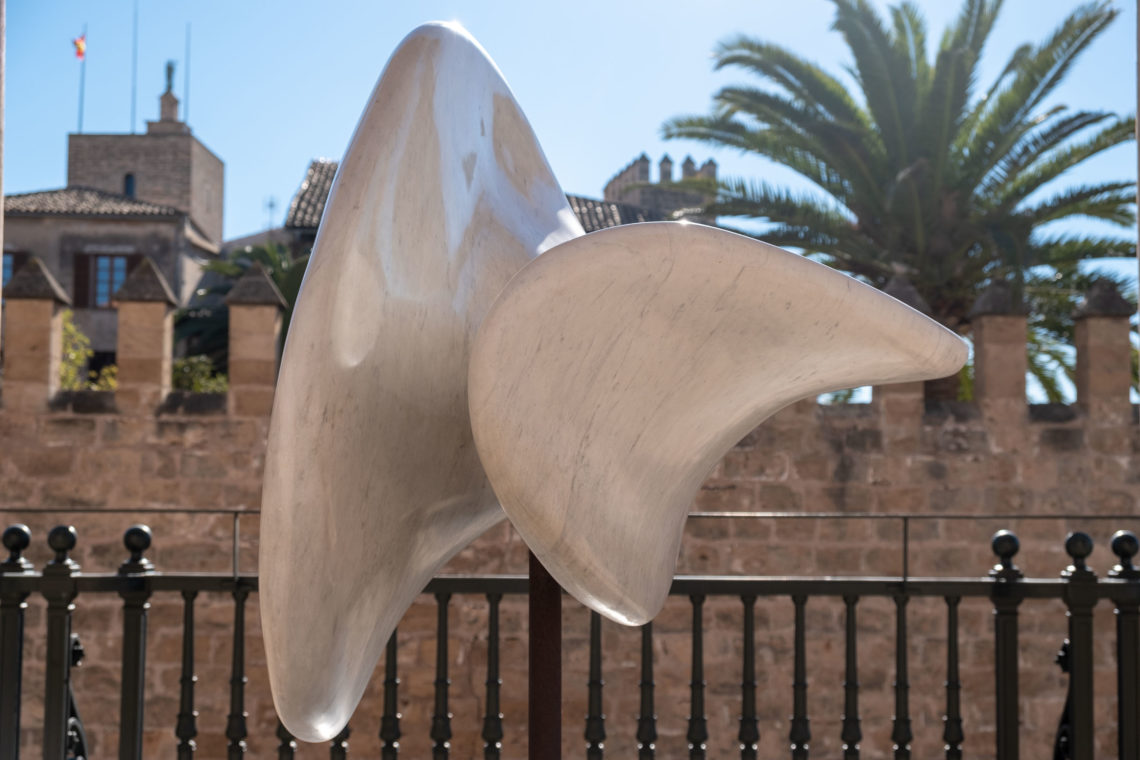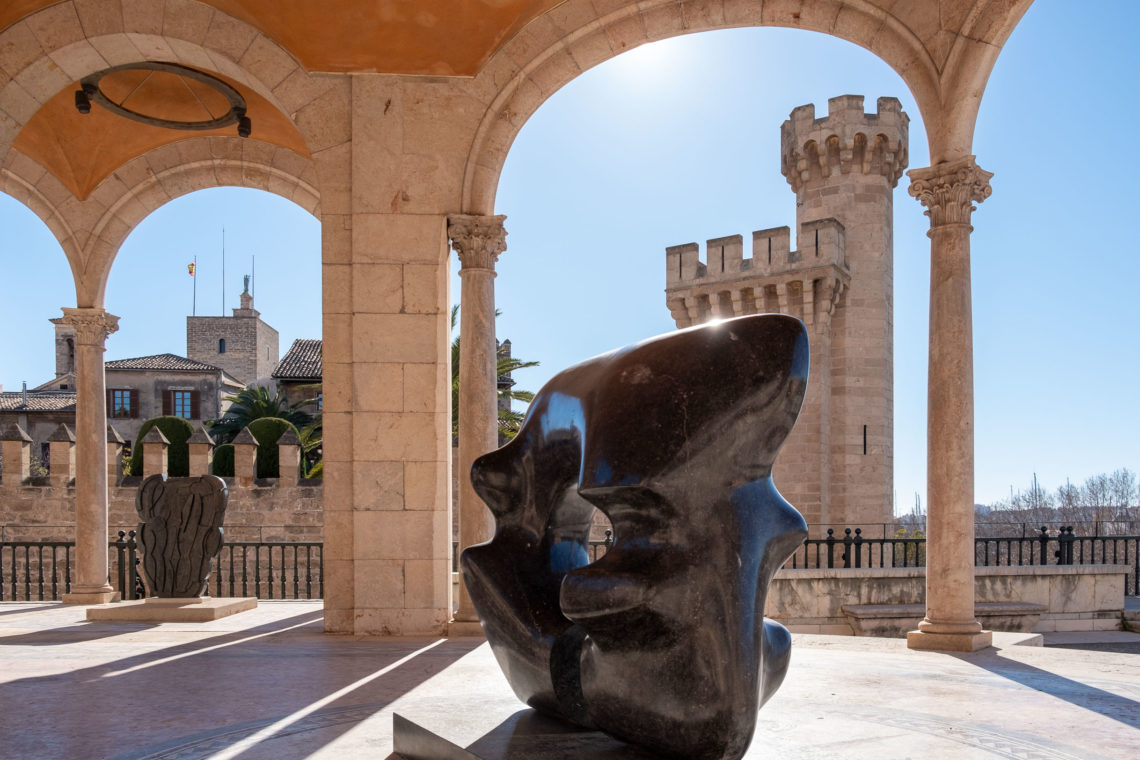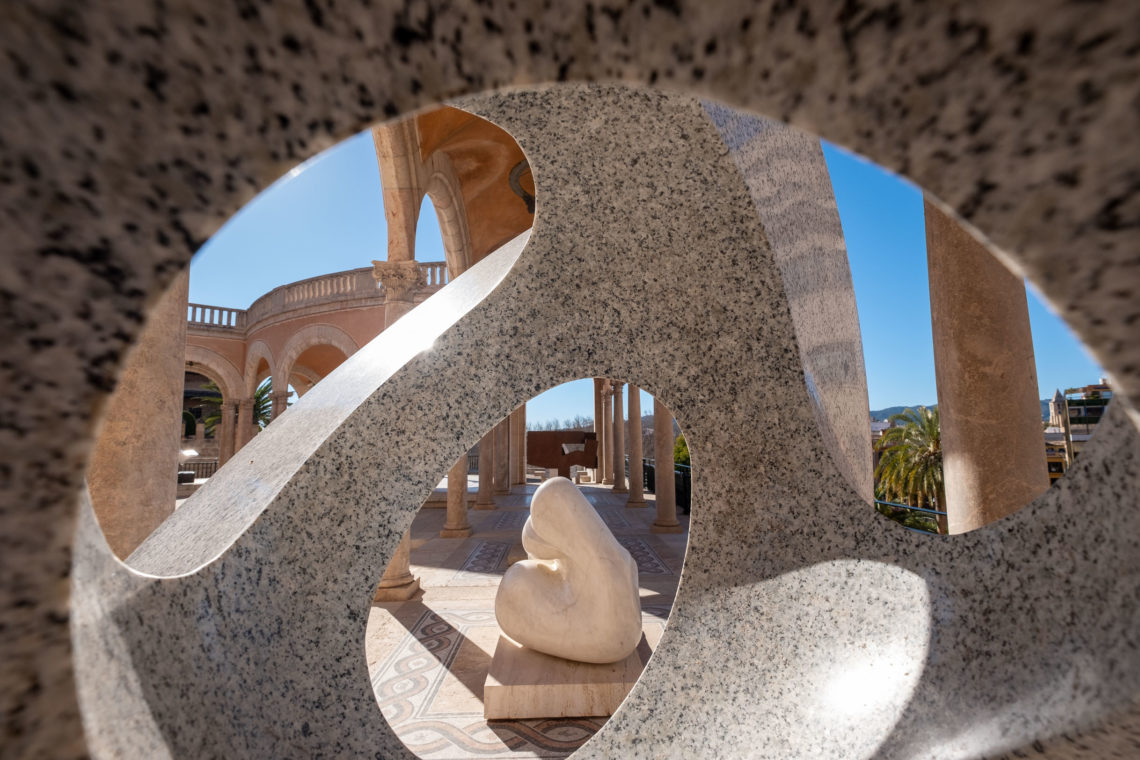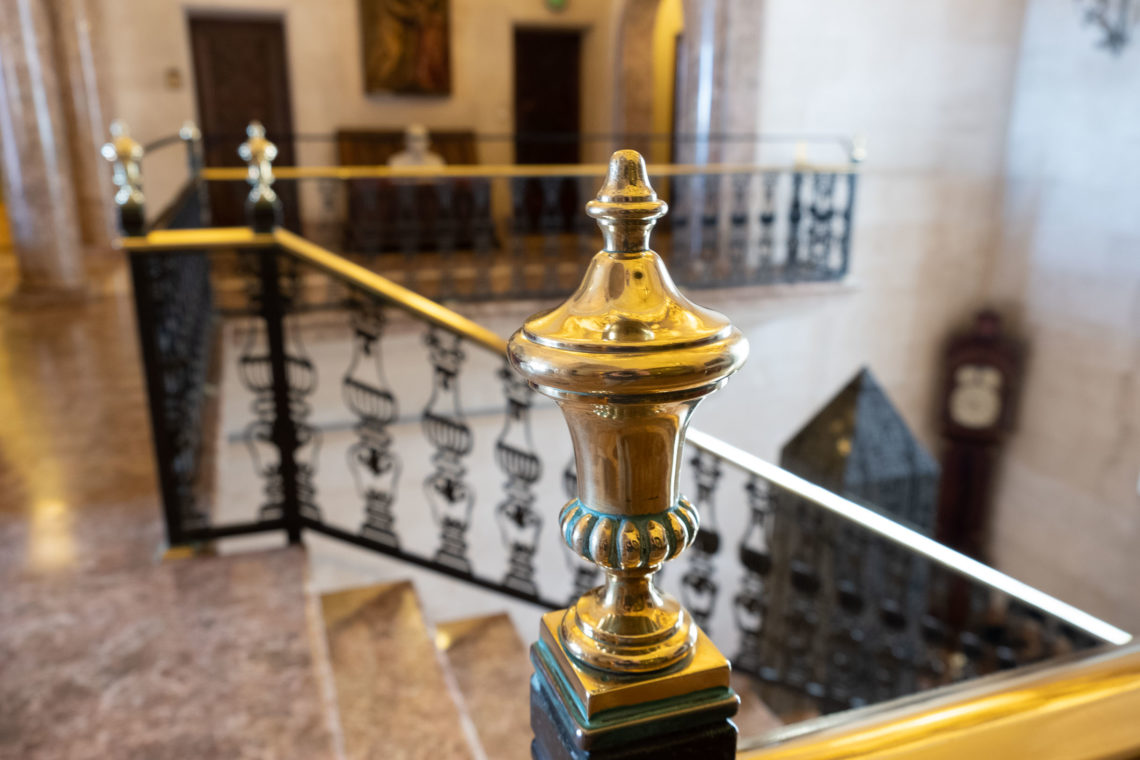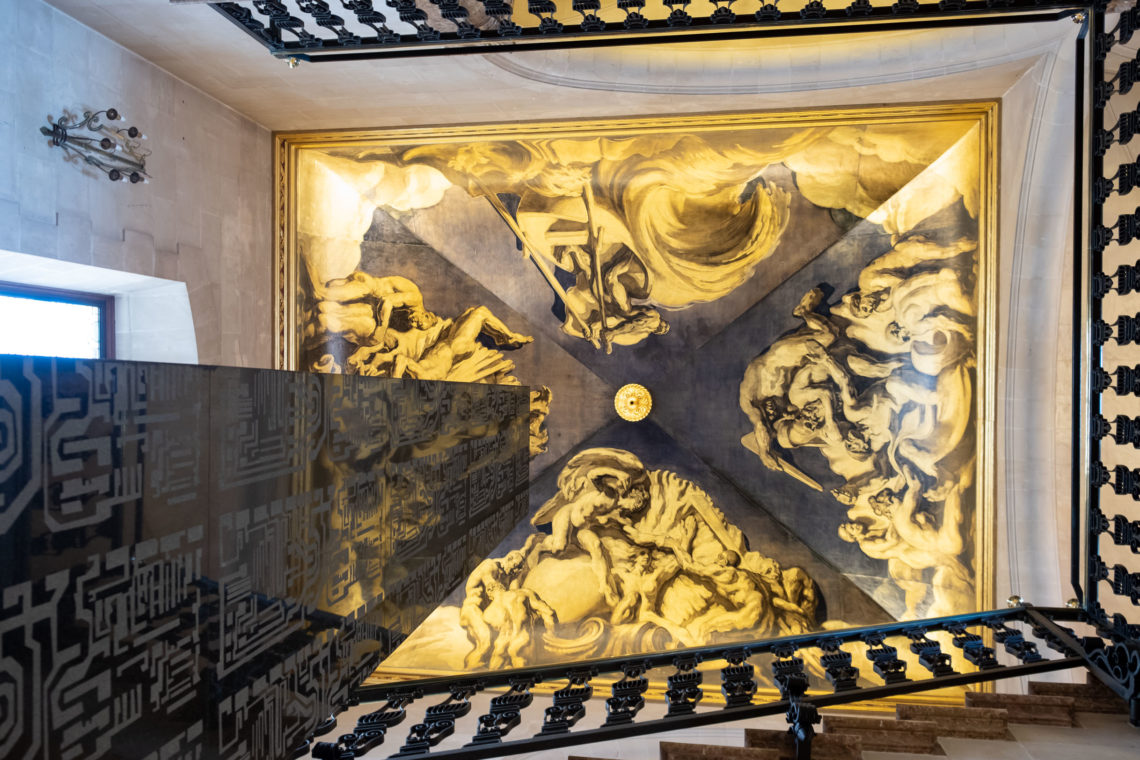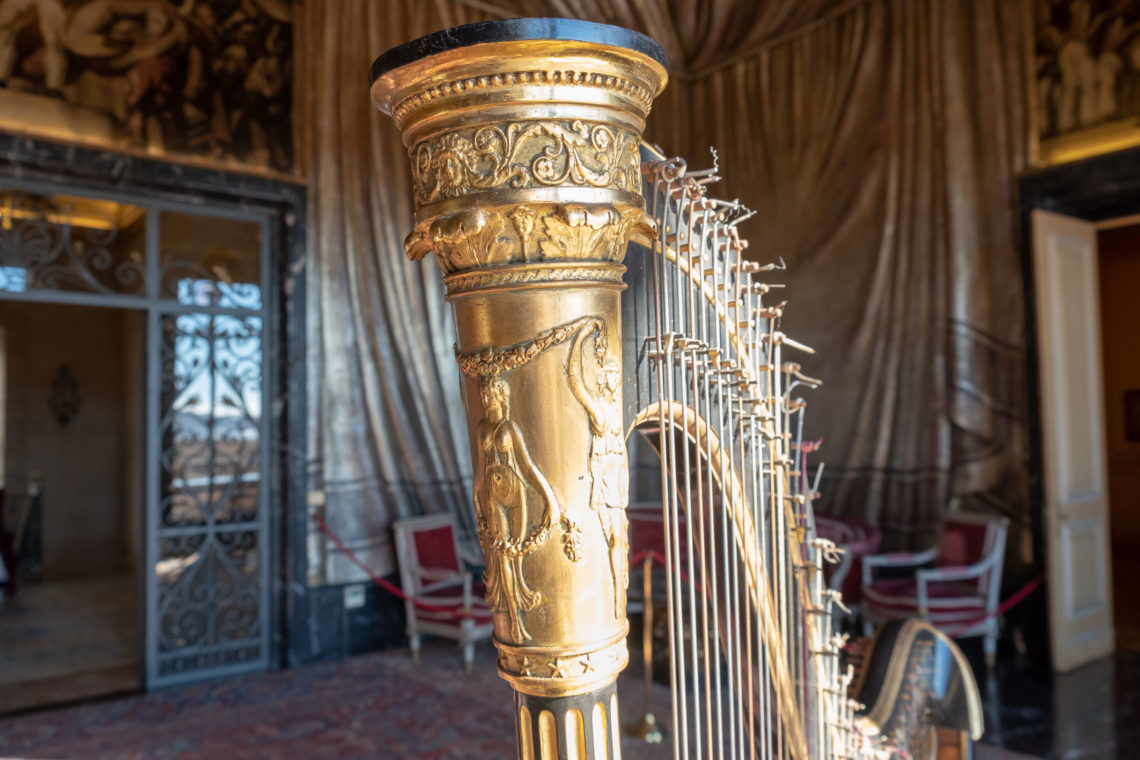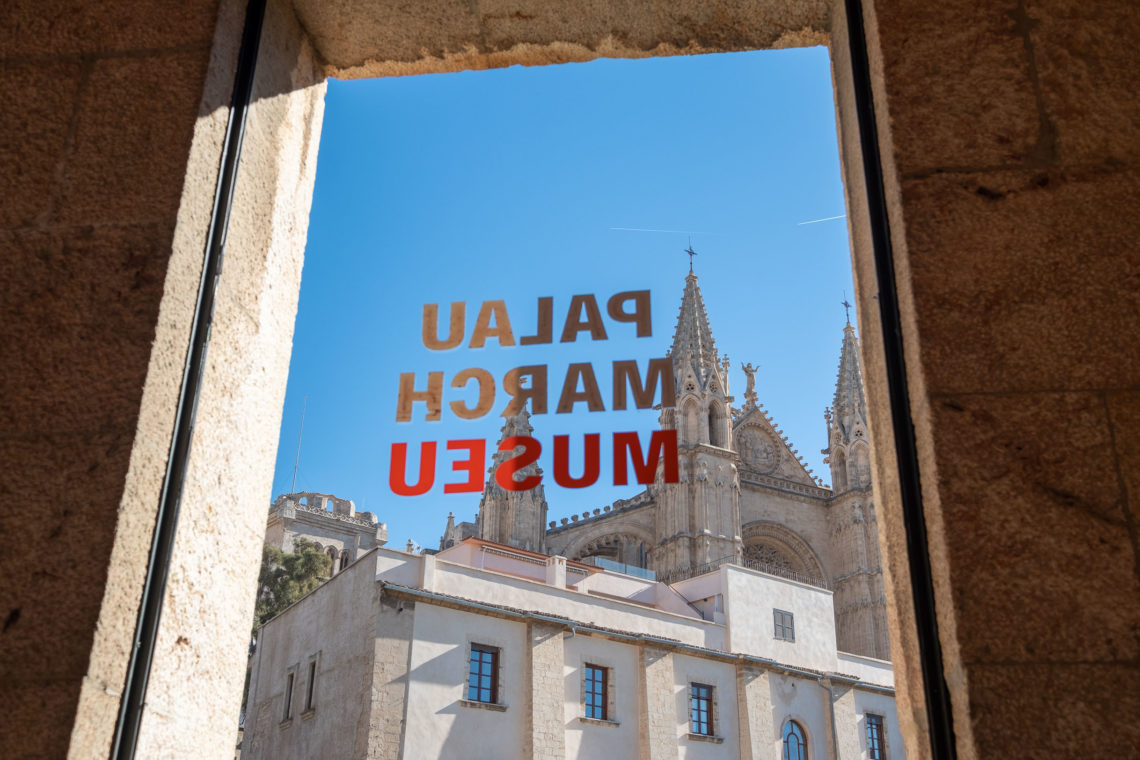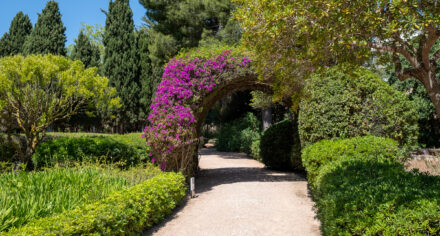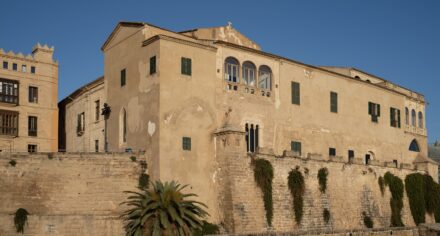There are countless terraces in Palma, from streetlevel to rooftop offering unique perspectives of the city. Sometimes it’s just a small opening to a brick wall or a secret garden, at others a spectacular vista across the skyline and the bay of Palma. One of the most impressive is the terrace of Palau March. Through a heavy wooden door you enter a courtyard bathed in light and shadows.
The neoclassic oasis is inhabited by powerful 20th-century sculptures from fabulous artists like Henry Moore, Eduardo Chillida, Auguste Rodin and Max Bill. I never tire to find new details that I didn’t notice before. Or I just sit down for a while on one of the stone benches between the tall marble columns and enjoy the breathtaking view.
Palau March is actually a museum so there is more to discover inside. A series of paintings by Dalí, an 18th century nativity scene with more than 1000 figurines, or a famous selection of historic maps. But it’s not so much the art displayed but the architecture and interior decoration that makes it special. The huge dining hall for example, or the music room with bizarre Tromp l’oeil drapery and New Orleans jazz-scenes from the 30s.
The espionage drama and great tv series „The Night Manager“ used Palau March as the backdrop for an Istanbul hotel. And indeed, the noble city palace has an unpleasant flip side. It was built for the Mallorcan financier Juan March in the early 1940s after the Spanish civil war. March had not only been doing business with the fascists, he was an active supporter of Franco. And during World War II he made even more money by collaborating with both sides. It was his son Bartolomé who dedicated his family home to arts and established the Fundación Bartolomé March in 1975. ![]()
C/ de Palau Reial, 18
07001 Palma
T 971 711 122
website

